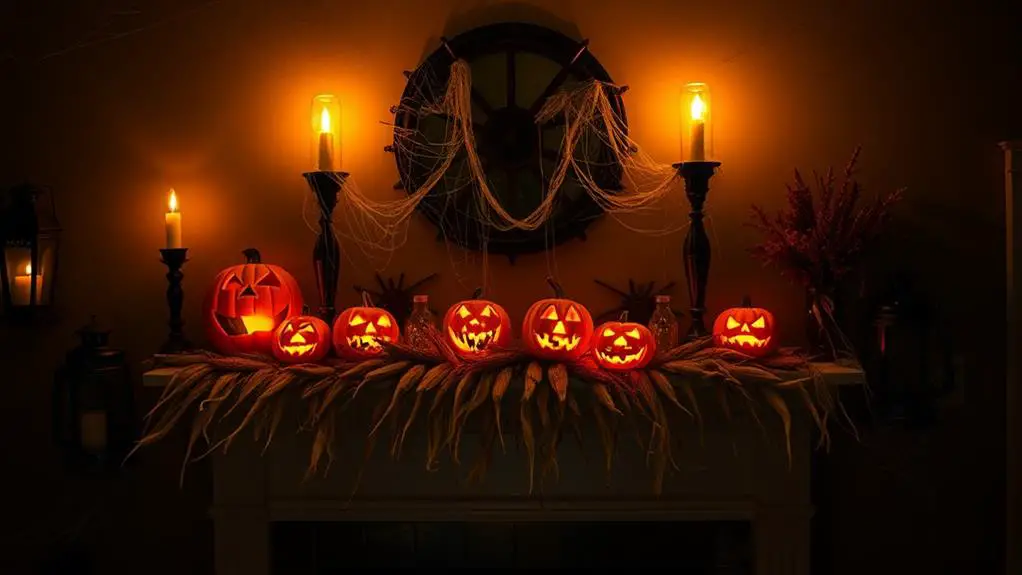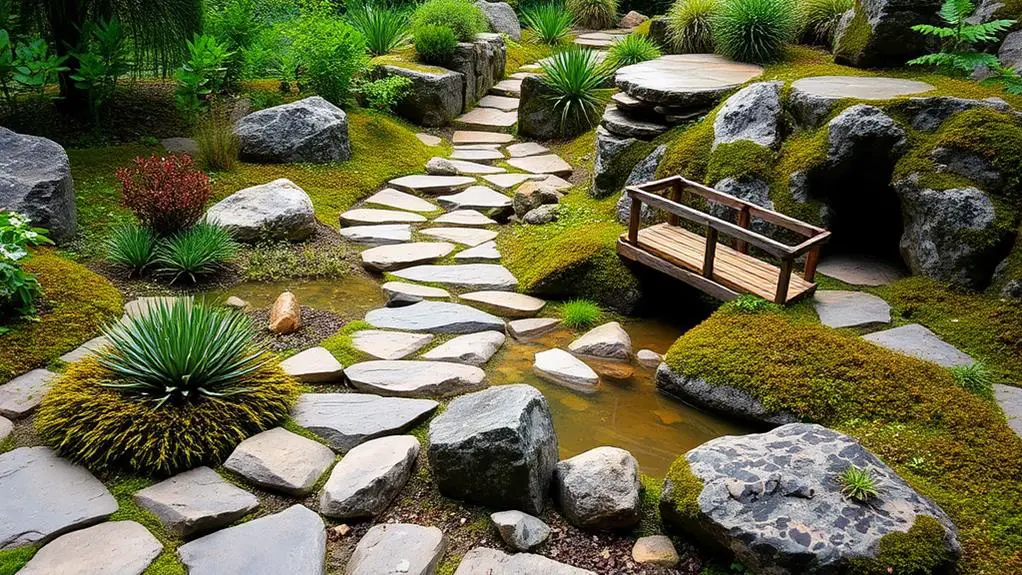You’re probably familiar with the often-neglected corners of your outdoor space, where plants struggle to thrive and the area feels wasted.
But what if you could transform these areas into vibrant oases that add charm and character to your garden?
By understanding the unique conditions of your corner spot, you can choose the perfect plants and design elements to bring it to life.
From clever container gardens to space-saving vertical solutions, the possibilities are endless – and we’re about to explore them.
Tiny but Mighty Container Gardens
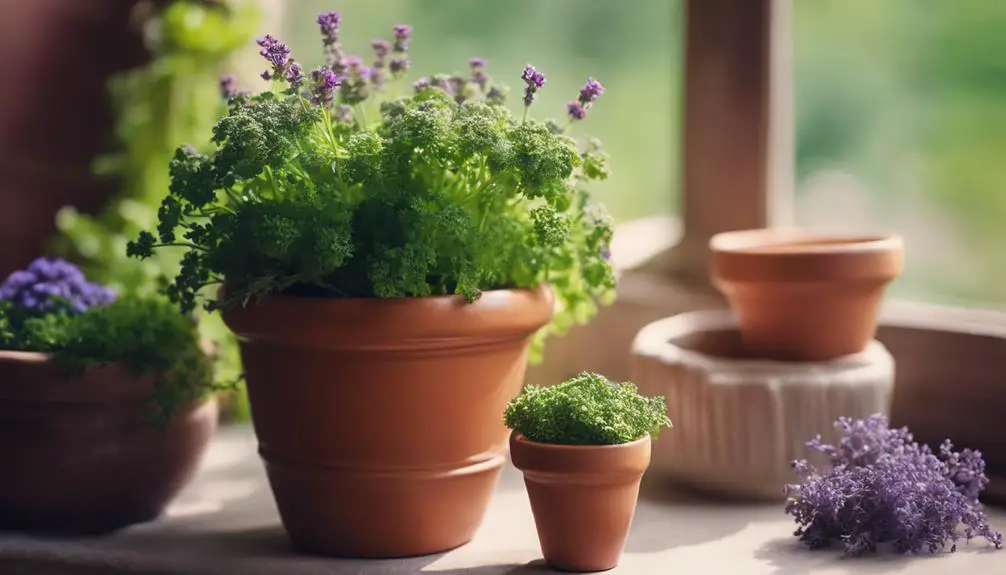
By strategically selecting plants that thrive in tight spaces and incorporating space-saving techniques, you can create a vibrant, self-contained oasis in even the smallest of areas.
When designing your tiny but mighty container garden, ponder the micro climates within your corner space. Identify areas that receive direct sunlight, partial shade, or full shade, and choose plants accordingly. For example, plants like succulents and cacti excel in sunny spots, while ferns and peace lilies prefer shadier conditions.
Soil preferences are also vital to ponder. Select plants with similar soil requirements to simplify maintenance and foster ideal growth. For instance, plants like herbs and leafy greens prefer well-draining soil, while flowers like petunias and begonias thrive in rich, organic soil.
Vertical Gardening Solutions
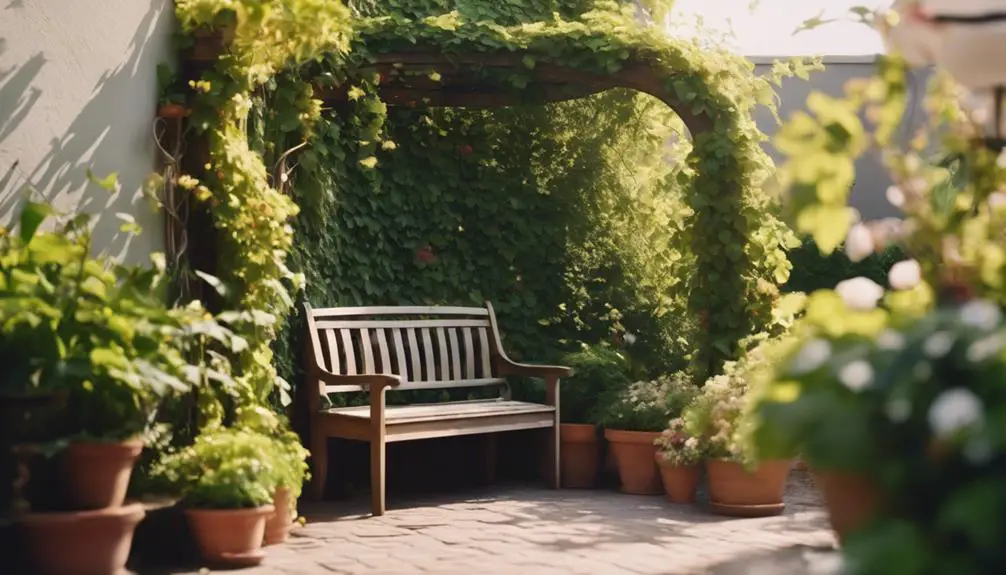
To maximize your corner garden‘s vertical potential, train vining plants like ivy, clematis, or morning glories to climb up trellises or wall-mounted planters, creating a lush, multi-level display.
You can also incorporate wall gardens, also known as living walls, to bring in a touch of greenery to your corner garden. These innovative systems consist of a trellis or a frame with built-in planters, allowing you to grow a variety of plants, from herbs to flowers, on a vertical surface.
When designing your vertical garden, consider the amount of sunlight your corner garden receives and choose plants accordingly.
For example, if your corner garden receives partial shade, opt for shade-tolerant plants like ferns or peace lilies.
To add visual interest, mix and match different textures, colors, and shapes of plants.
You can also incorporate decorative elements like metal or wooden accents to enhance the overall aesthetic of your living wall.
Corner Planters for Small Spaces
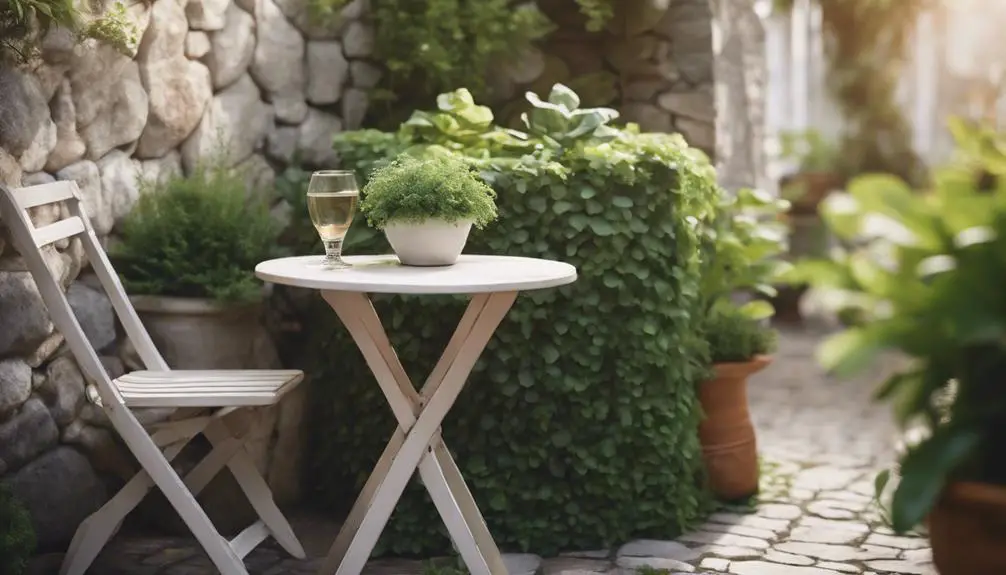
As you design your corner garden, you’ll want to ponder corner planters that maximize space without sacrificing style.
You’ll find a range of space-saving design options that fit snugly into tight corners, making the most of every inch.
Space-Saving Design Options
In compact corners, triangular or hexagonal planters can be nestled, maximizing every inch of available space to create a lush oasis.
When optimizing layout, consider the 45-degree angle of a triangular planter, which allows for seamless integration into the corner. This design not only saves space but also creates a visually appealing focal point.
For efficient storage, look for planters with built-in shelves or compartments. These clever features enable you to stash gardening tools, seeds, or fertilizers within easy reach, keeping your corner garden organized and clutter-free.
By choosing a planter with a compact footprint, you can allocate more space to plants, ensuring a vibrant and thriving corner garden.
With a little creativity, even the most diminutive corners can be transformed into a verdant retreat.
Versatile Planter Materials
Corner planters for small spaces come in a wide range of materials, each with its own unique benefits and aesthetic appeal.
From modern and sleek to rustic and earthy, the options are endless.
For a touch of warmth and character, consider reclaimed wood planters. Not only do they add a cozy feel to your corner garden, but they also tell a story of sustainability and eco-friendliness.
If you prefer a more dramatic look, natural stone planters are the way to go. Their rough, organic texture adds depth and visual interest to your space. Plus, they’re incredibly durable and can withstand the elements.
Other materials to explore include ceramic, metal, and recycled plastic. Each has its own strengths and weaknesses, so choose the one that best fits your style and needs.
Compact Corner Styles
Opt for compact corner planters that fit snugly into tight spaces, maximizing every inch of your small garden while maintaining a visually appealing layout.
These planters are specifically designed to thrive in confined areas, providing an opportunity to add greenery to even the most restricted corners. When selecting a planter, consider the shape and size of the corner, ensuring a seamless fit.
You can choose from a variety of materials, such as metal, wood, or ceramic, to complement your garden’s aesthetic.
To create a striking visual effect, incorporate corner accents, like decorative stones or small ornaments, to draw attention to the compact corner planter.
Angular landscaping techniques can also be employed to add depth and visual interest to the space. By cleverly positioning plants with varying textures and heights, you can create a sense of movement and energy in the corner.
With compact corner planters, you can transform even the smallest of spaces into a vibrant oasis, perfect for relaxation and contemplation. By embracing innovative design solutions, you can tap the full potential of your corner garden, no matter its size.
Hidden Seating Area Ideas
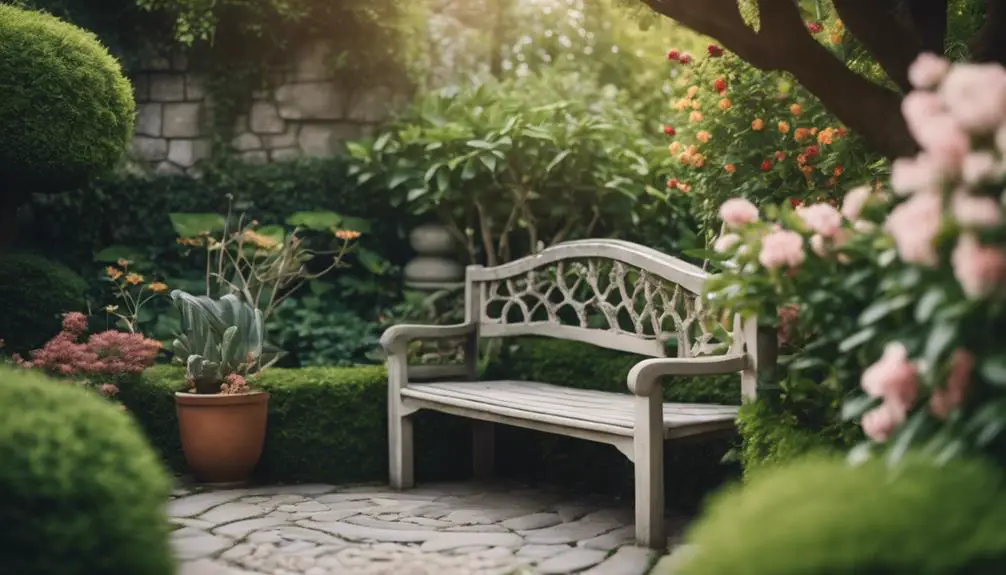
Tucked away behind lush foliage or cleverly concealed by trellises, seating areas await discovery in unexpected corners of your garden.
You can create cozy nooks that invite relaxation and contemplation, perfect for a quiet morning coffee or an afternoon read.
To design a hidden seating area, consider the natural topography of your garden. Look for areas where the landscape creates a natural amphitheater, providing a sense of seclusion and privacy.
Use plants with varying textures and heights to create a sense of depth and visual interest. Add a statement piece, like a sculptural bench or a hammock, to create a focal point.
Consider incorporating a water feature, like a small fountain or birdbath, to add soothing sounds to your secret escape.
With careful planning and attention to detail, you can create a hidden oasis that’s all your own.
Whimsical Statue Displays

Positioning whimsical statues throughout your garden creates a sense of wonder, drawing visitors’ eyes to unexpected corners and inviting them to explore.
You can create a narrative by grouping mythic creatures, such as unicorns and dragons, amidst lush foliage or near water features. This will encourage visitors to wander and discover hidden treasures.
Ponder placing a fairy perched on a mushroom or a toadstool, whispering secrets to the flowers. The juxtaposition of these whimsical elements with natural surroundings will create an enchanting atmosphere.
To add visual interest, vary the scale and texture of your statues. A large, imposing dragon can be balanced by smaller, delicate fairy figurines.
You can also incorporate statues with different materials, such as bronze, stone, or ceramic, to add depth and complexity to your display.
Don’t forget to ponder the lighting; strategically placed spotlights can highlight your statues, creating an otherworldly ambiance in the evening.
Succulent Corner Garden Designs
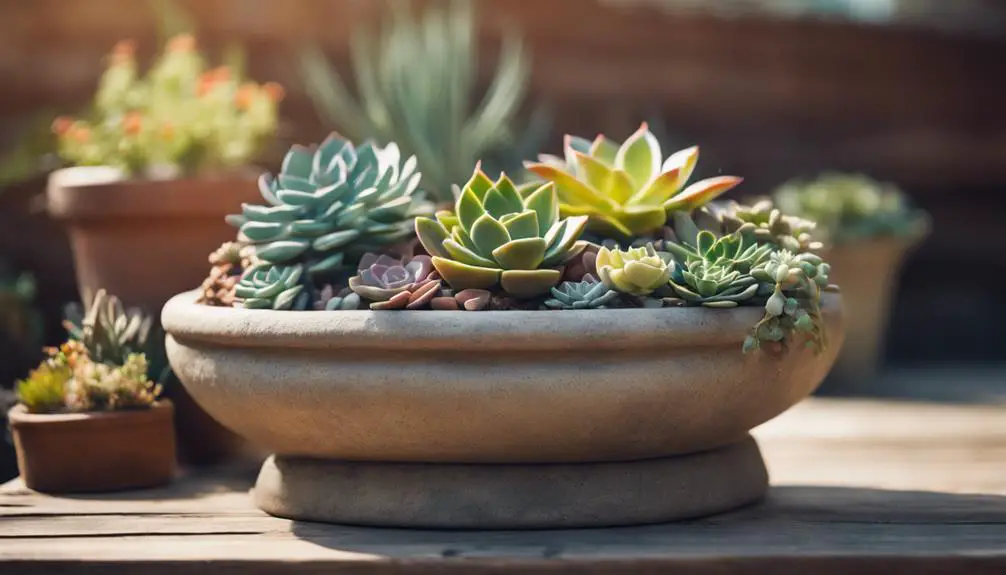
Design a visually striking succulent corner garden by combining a variety of species with unique textures, shapes, and sizes, and strategically arranging them to create a layered, dimensional look.
You can evoke the essence of desert landscapes by incorporating species like aloe, agave, and echeveria, which thrive in dry conditions. To add depth, place larger succulents like euphorbia or crassula at the base, and surround them with smaller, trailing varieties like sedum or string of pearls.
To infuse your corner garden with coastal vibes, incorporate succulents with soft, powdery leaves like kalanchoe or crassula ovata. These species will add a touch of softness to your design.
Consider adding decorative elements like seashells, pebbles, or driftwood to enhance the coastal feel. When arranging your succulents, don’t be afraid to experiment with different heights and angles to create visual interest.
Utilizing Dead Corners With Trellises
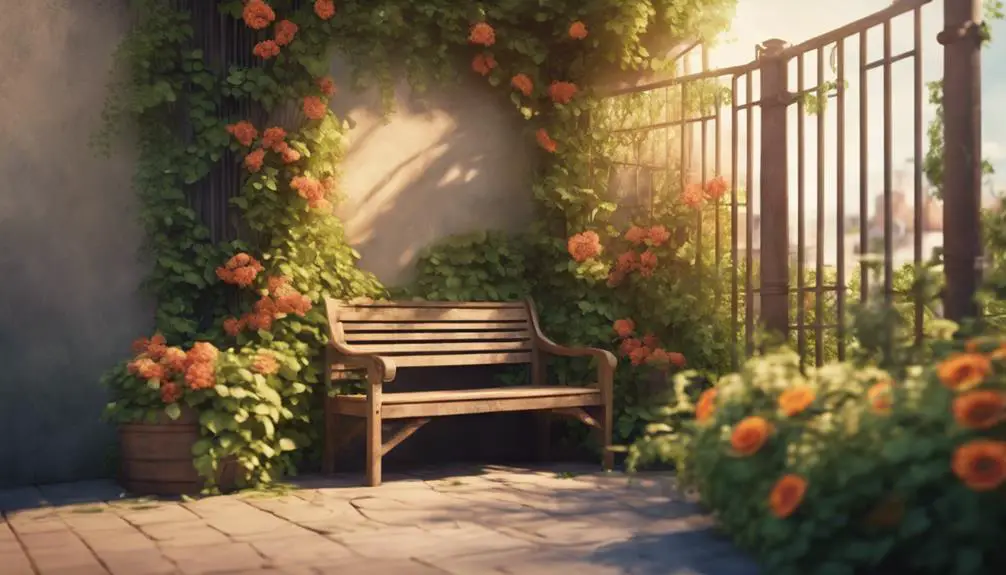
As you plan your corner garden, you’ll want to capitalize on the often-wasted space in dead corners by installing trellises.
They allow you to train vining plants to grow upwards, creating a visually striking display that draws the eye upward.
Train Vining Plants Up
You can turn dead corners into thriving gardens by training vining plants up trellises, which not only maximize space but also add a stunning visual element to your outdoor area.
To achieve this, you’ll need to invest in a sturdy plant support system. Look for trellises with a sturdy base and adjustable arms to accommodate different plant sizes.
When selecting vining plants, opt for varieties that are naturally inclined to climb, such as clematis, wisteria, or morning glories.
For successful vine training, follow these tips: plant your vine at the base of the trellis, and gently twine the stems around the support as they grow.
You can use soft ties or twine to secure the stems if needed. Make sure to provide adequate sunlight and water for your plants, and prune them regularly to maintain a healthy shape.
With a little patience and care, your trellis-trained vines will thrive, creating a beautiful focal point in your corner garden.
Add Vertical Interest Here
By incorporating trellises into your corner garden, you can capitalize on the often-underutilized vertical space, creating a visually appealing display that draws the eye upwards.
This clever use of dead corners allows you to add depth and dimension to your garden, making it feel more expansive.
Trellises can be used to support climbing plants, creating a lush, green screen that not only adds visual interest but also provides shade and privacy.
You can also use trellises as a unique form of wall decor, adding texture and pattern to your garden’s vertical plane.
Consider using a mix of materials, such as wood, metal, or bamboo, to create a visually appealing contrast.
As you design your trellis installation, think about the scale and proportion of your plants in relation to the surrounding structures.
Soften Harsh Angles Now
Trellises can soften harsh angles in your corner garden by creating a gentle, curved silhouette that visually breaks up the 90-degree joint.
By training vines or climbing plants to grow up and around the trellis, you’ll create a beautiful, organic angle solution that draws the eye away from the sharp corner. This is especially effective when paired with corner decor that complements the natural curves of the trellis.
To maximize the effect, choose a trellis with a curved or rounded shape, and place it at an angle to the corner.
This will create a sense of movement and flow, drawing the eye through the garden. Consider using a trellis with a built-in planter or incorporating one nearby to add extra greenery to the space.
By incorporating a trellis into your corner garden design, you’ll create a visually appealing and innovative angle solution that adds depth and interest to the space.
With the right combination of plants, trellis, and corner decor, you can turn a once-harsh corner into a beautiful focal point.
Cozy Reading Nook Inspiration
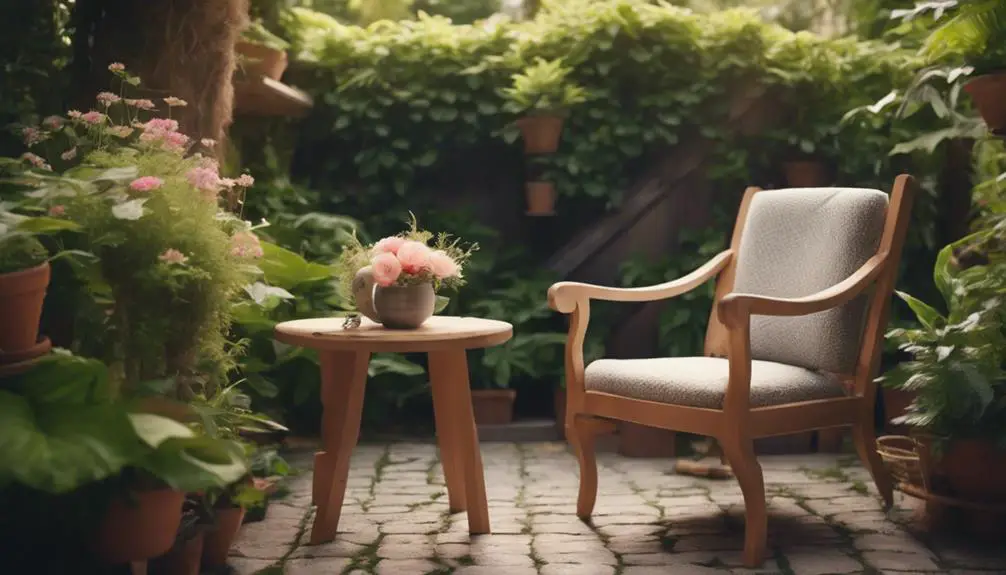
Carve out a secluded spot in your corner garden by incorporating a curved bench that wraps around a mature tree, creating a sheltered haven for getting lost in your favorite book.
This cozy reading nook inspiration will transport you to a serene oasis, perfect for escaping the hustle and bustle of daily life.
To create the ultimate cozy retreat, focus on incorporating plush, cozy textiles such as soft cushions, chunky throw blankets, and vibrant pillows in soothing colors.
These elements won’t only add warmth and comfort but also create a sense of quiet ambiance, allowing you to fully immerse yourself in your book.
Consider adding a few strategically placed lanterns or string lights to create a warm, soft glow, further enhancing the peaceful atmosphere.
As you settle into your new reading nook, you’ll find yourself transported to a world of tranquility, where the stresses of everyday life melt away, leaving only the joy of getting lost in a good book.
Corner Focal Point Features
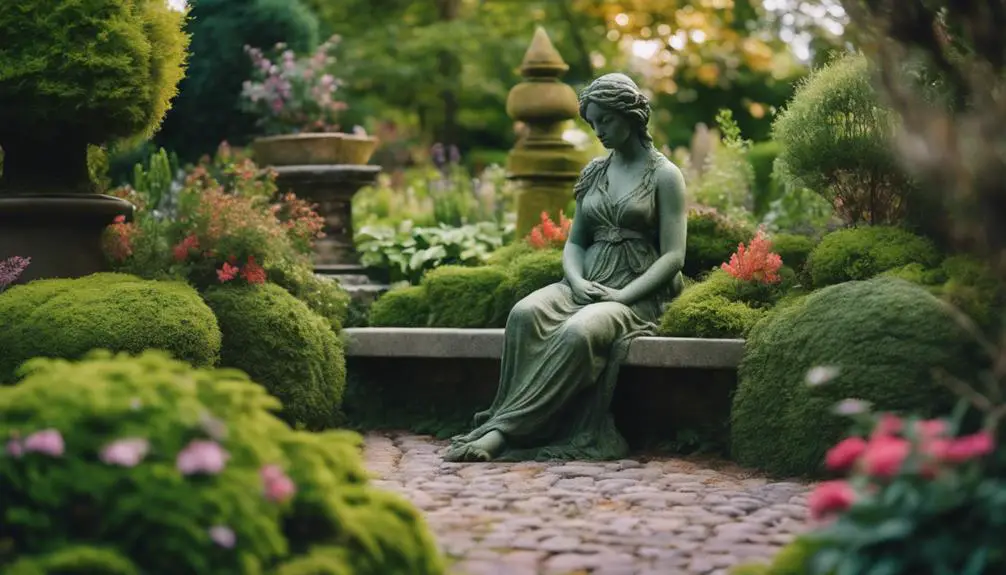
You’ll draw the eye to your corner garden‘s focal point by incorporating visually striking features, such as statement planters, ornate sculptures, or vibrant mosaics, that create a sense of dynamic energy.
These corner accents serve as garden anchors, grounding the space and defining its character. To maximize visual impact, consider the scale and proportion of your focal point feature in relation to the surrounding garden.
A large, bold planter can dominate the corner, while a smaller, more delicate sculpture can add a touch of whimsy.
When selecting a corner focal point feature, think about the style and mood you want to evoke in your garden. Modern and sleek, or rustic and charming?
The right choice won’t only draw the eye but also set the tone for the entire garden. Don’t be afraid to experiment and mix different materials, textures, and colors to create a unique look that reflects your personality.
Beautifully Shaded Corner Retreats
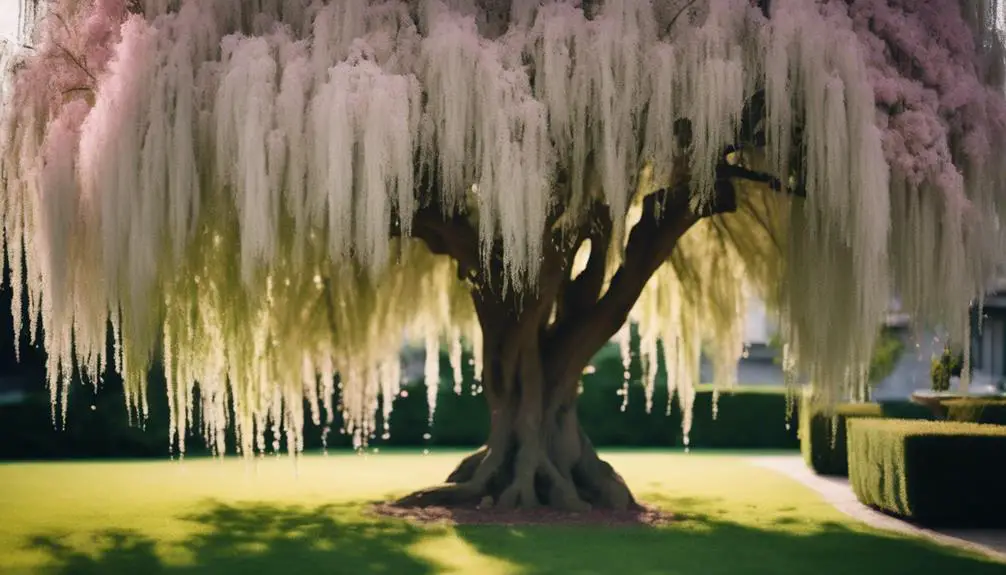
By positioning a statement shade structure, like a pergola or gazebo, in your corner garden, you can create a serene, sheltered retreat that invites relaxation and contemplation.
This structural element won’t only provide shade but also define the space, making it feel more intimate and secluded.
As the sun filters through the structure’s latticework or roof, it will cast a warm, dappled light on the surrounding plants and hardscape, creating a sense of calm.
By incorporating lush greenery, like ferns or flowering vines, around the perimeter of the structure, you’ll create a secluded oasis that feels like a world away from the hustle and bustle of daily life.
To enhance the ambiance, consider adding a comfortable seating area, like a built-in bench or a hammock, where you can sit back, relax, and enjoy the peaceful atmosphere.
Space-Saving Tiered Planters
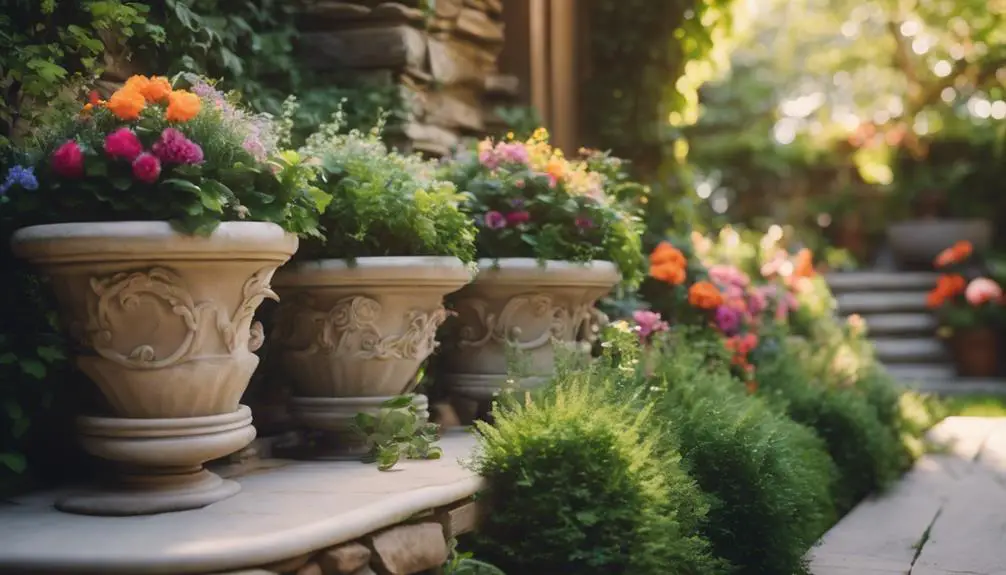
In tight corner spaces where floor real estate is scarce, tiered planters offer a space-saving solution, allowing you to maximize vertical growth while minimizing horizontal sprawl.
By stacking planters, you create a visually appealing tiered beauty that not only saves space but also adds depth and dimension to your corner garden.
Think of it as a planter puzzle, where each piece fits perfectly together to create a stunning display.
To create a cohesive look, choose planters with a similar material or style, but vary the sizes to add visual interest.
You can also mix and match plants with different textures, colors, and growth habits to create a dynamic display.
Consider using a trellis or obelisk to add support for climbing plants, or incorporate a self-watering planter to reduce maintenance.
By strategically placing your tiered planters, you can create a stunning corner garden that’s both functional and beautiful.
With a little creativity, you can turn even the smallest corner into a thriving oasis.
Bright and Bold Color Schemes
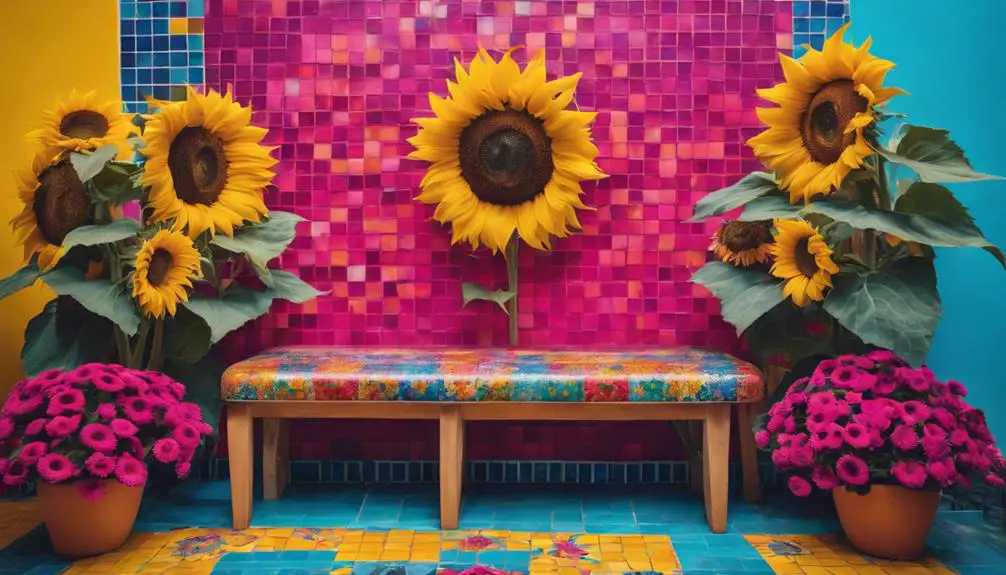
As you design your corner garden, bold and vibrant hues can electrify the space, drawing the eye upward and outward to create a dynamic visual impact.
A bright and bold color scheme can transform a small, neglected corner into a showstopping feature.
To achieve this, incorporate vibrant accents through colorful flowers, foliage, or decorative elements. Consider color blocking, where you group plants or features by hue to create a visually striking display.
For example, pair bright yellow blooms with deep blue foliage, or contrast warm terracotta pots with cool greenery.
This technique adds depth and visual interest to your corner garden.
To take it to the next level, balance bold colors with neutral backgrounds, allowing the eye to focus on the vibrant accents.
Creating a Focal Point Fountain
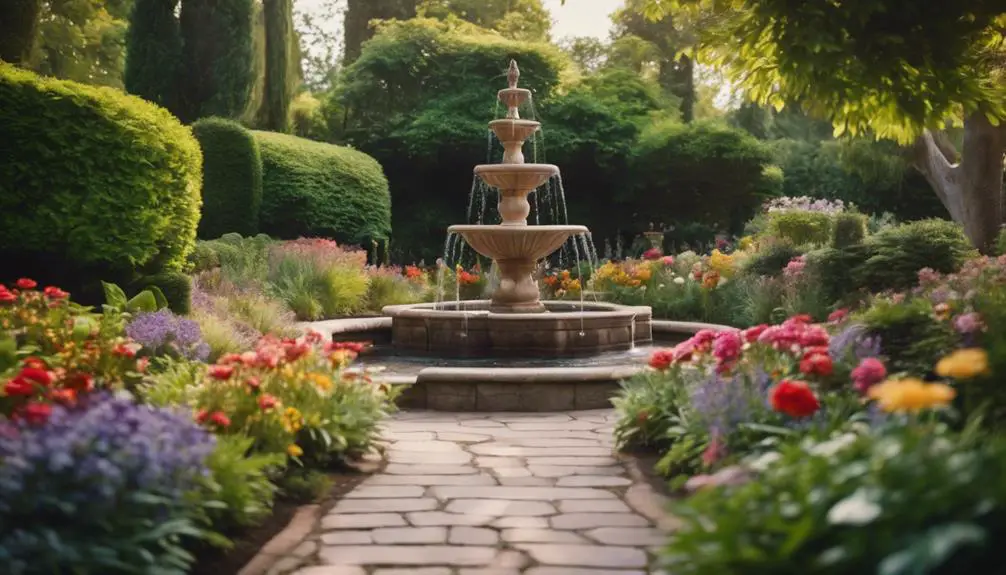
With a strategically placed fountain, you can anchor your corner garden’s visual appeal, creating an enchanting focal point that draws the eye and calms the senses.
To maximize impact, consider the scale and proportion of your fountain in relation to the surrounding space. A larger fountain can overwhelm a small corner, while a petite one may get lost in a larger area.
When selecting a fountain design, think about the style and theme of your garden. Modern and sleek fountain designs can complement contemporary gardens, while classic and ornate designs suit traditional settings.
You can also incorporate water features that double as sculptures, adding an extra layer of visual interest.
To create a cohesive look, choose materials that blend with your garden’s aesthetic. For example, a natural stone fountain can blend seamlessly with a rustic or Zen-inspired garden.
Frequently Asked Questions
How Do I Prevent Corner Gardens From Becoming Too Cluttered?
When designing a space, you’ll prevent clutter by establishing a visual hierarchy, prioritizing focal points, and balancing elements with negative space, ensuring each component has room to breathe and be appreciated.
Can I Use Artificial Plants in a Corner Garden Design?
You can definitely incorporate artificial plants in your design, opting for high-quality fake foliage that mimics natural textures and colors, but consider your plant preferences and balance them with realistic expectations for a visually stunning outcome.
What Type of Soil Is Best for a Corner Garden?
When selecting soil, you’ll want to ponder soil pH levels, ranging from acidic to alkaline, and soil nutrient content, including nitrogen, phosphorus, and potassium, to create an ideal environment for your plants to thrive.
How Often Should I Water a Corner Garden?
When crafting a water schedule, you’ll want to monitor moisture levels daily, adjusting as needed. Aim for consistent hydration, but avoid overwatering, which can lead to root rot. Water thoroughly 2-3 times a week, or when soil feels dry to the touch.
Are Corner Gardens Suitable for Windy Areas?
You’re wondering if windy areas can host a thriving garden? Absolutely! Implement windbreak options like trellises or screens, and incorporate sheltered design elements, such as curved paths, to create a serene oasis that defies gusty conditions.
Conclusion
By incorporating these corner garden ideas, you’ve transformed a neglected spot into a thriving haven.
You’ve optimized plant selection by microclimate, ensuring thriving plants that require minimal upkeep.
Space-saving techniques, varied textures, and bold colors have created visual appeal.
Now, sit back and enjoy your vibrant oasis, where every inch is maximized and beauty abounds.


